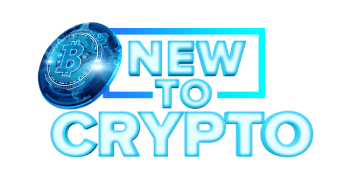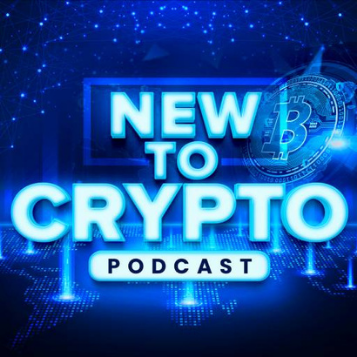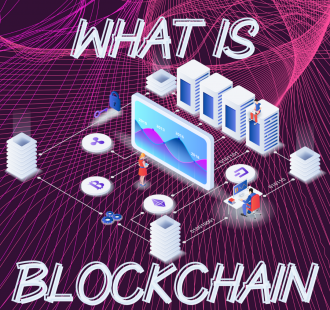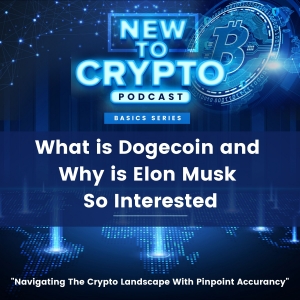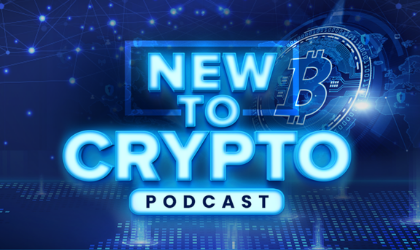What is Blockchain
SUMMARY KEYWORDS
blockchain, crypto, supply chain, records, chain, diamond, decentralized, network, nodes, hash codes, called, access, bitcoin, episode, patients, block, digital, added, cryptocurrency, created
00:00
Welcome to the New to Crypto Podcast designed to guide you through the crypto landscape with pinpoint accuracy created for the new and intermediate crypto investor. Join your host Crypto Travels Michael as he takes you through the different facets of getting started and succeeding in your crypto journey. New to Crypto Podcast brings you new episodes daily Monday through Friday with surprise bonus episodes sometimes on the weekend. Let me ask you, are you new to crypto don’t know where to start? Are you more experienced but have questions? Then you’re in the right place. This podcast is designed for you coming at you from the Trading Center and the Lifestyle Dezign Studio. Here’s your host Crypto Travels Michael.
00:53
Okay, welcome to what is blockchain episode. So today I’m going to share with you what is blockchain? So I’m going to break this down for you in the most simple way that I know. I’m sure you’ve heard about the buzzwords in the media, and maybe even from friends and others in the last couple of years, blockchain cryptocurrency Bitcoin digital money.
01:23
So right now I’m going to unpack in a simplified way, what exactly is blockchain? blockchain is a database that is shared across a network of computers. Once a record has been added to the chain, it’s very difficult to change. The network makes constant checks to the database. And this makes sure all of the copies of the database are the same on the network. So blockchains became popular because of Bitcoin, and other cryptocurrencies that followed.
02:05
However, there are many other use cases for blockchain. Let’s break down the process of blockchain. There’s a database where records are bundled together in what’s called blocks and added to the chain. And this happens in one after another sequence. So that the three basic parts are the record, the block and the chain. So the record can be any information. And the block is a bundle of records. And the chain is all of the blocks linked together. So let’s use a sample Bitcoin transaction as an example, to share how the transaction gets included into the blockchain.
03:09
So step number one, let’s say I’m selling two of my coins to you, for a total of 50 US dollars. The record lists the details, and this includes a digital signature from each party, step to the record is checked by the network, and the computers in the network are called nodes. And these nodes, check the details of the trade or transaction to make sure it is valid. So once checked by the network, the record is accepted.
03:51
Step three, the records that the network accepted are added to a block. Each block contains a unique code, and this is called a hash. It also contains the hash of the previous block in the chain. Other records are stored in this block as well. a block of records is ready to be added to the chain.
04:21
Step four the block added to the blockchain. The hash codes connect the previous block and the new block together in a specific order. A hash code is created by a math function that takes digital information and generates a string of letters and numbers from it. So two important characteristics of hash codes are first no matter what the size of the original file. A hash function will always generate a code of the same length. Second, any change to the original input will generate a new hash. So any changed hash breaks the chain, the next block in the chain still has the old hash. So to restore the chain, a hacker would have to recalculate that, and the next and so on and so on. So recalculating all of those hashes would take an enormous amount of time and computing power.
05:38
So this is one of the reasons why blockchain and Bitcoin and cryptocurrency is as been revolutionary, in literally changing the world in using digital finance. So, unlike traditional Ledger’s, a blockchain database is decentralized and has no master hub. So a blockchain is a decentralized network with notes, and all of the nodes can access the information and compete to be the next to add the database.
06:23
And so traditional Ledger’s have a centralized hub using a centralized network, where authority is held by a central node. Without centralized control of a network trust is a problem. And one answer is to only let people you know, such as company employees join in, for example, but blockchains, such as the Bitcoin network, are open to anyone. So members are anonymous, and there is no way to know if they are trustworthy. So to resolve this and build trust, these blockchains set tests for the computers that seek to join and add records to the chain. These tests are called consensus models, and reaching a consensus. The tests require network members to prove themselves.
07:22
So two examples are proof of work in proof of stake. So proof of work for example, to add a block to the chain nodes must demonstrate that they have done work by solving an increasingly difficult computational puzzle. This process is called mining, and it uses a lot of computing power in return for their work. Members can receive rewards, tokens, for instance, or Bitcoins. This is the way it works for Bitcoin miners. Then there’s proof of stake participants buy tokens which allow them to join the network. And the more tokens they have, the more they can mind. Let’s talk about different types of uses for blockchain.
08:13
different uses for blockchain, six different uses would be cryptocurrency. It can be used in banking, supply chain, health care, voting, even property records. I’d like to unpack each of these for you now. Let’s start with cryptocurrency pioneered by Bitcoin. 1000s of other cryptocurrencies have fallen, and blockchain has exploded by the use of cryptocurrencies, many of which have their own unique blockchains.
08:49
Some of these blockchains include Ethereum, Cardano, Theta, Polkadot, Zilliqa, Vechain, Thor, Binance Smart Chain, and many more. Some of these have created their own blockchain altogether, and some have built theirs on top of an existing one. By the way, I will get into all of these in more detail in future episodes. Next on the list of use cases, is banking. By establishing a decentralized channel for payments, banking institutions can use emerging technologies to facilitate faster payments, and lower the fees of processing them. By offering higher security and lower costs of sending payments, banks could introduce a new level of service, bring new products to the table to the market, and finally be able to compete with innovative FinTech startup firms.
09:53
By adopting blockchain, banks would be able to cut down on the need for verification. from third parties and accelerate the processing times for traditional bank transfers, banks could also use blockchain for clearance and settlements. Additionally, they could use blockchain for credit and loans, as well as for trade finance. They could also use blockchain in banking as digital identity verification. So, blockchain and banking has a phenomenal future ahead of it.
10:31
Next, and third on the list is supply chain. It’s already being used in the supply chain. In the United Arab Emirates, the state owned oil company, Abu Dhabi National Oil Company, in collaboration with IBM successfully launched a blockchain supply chain system pilot program. And the idea was to track oil from the well to customers, while simultaneously automating transactions along the way. Another use of blockchain and supply chain is the world’s largest diamond producer De Beers has taken steps to end the sale of blood diamonds, and they basically announced the first successful blockchain supply chain program, and they call it tracer.
11:22
And de beers is basically able to track diamonds from the mine to the Qatar polisher, and finally to the jeweler and photos of the diamonds progress along the way is uploaded to the blockchain and the details about each diamond, the color, the quality, the location, etc. So tracer has been able to give customers peace of mind, it has basically transformed what could be the future in the diamond industry. Other uses of blockchain used in supply chain currently are in food safety, logistics blockchain in the fashion sector, safeguarding wine supplies, while using blockchain logistics tools, and many more other use cases currently exist.
12:12
Fourth on the list of use cases for blockchain is healthcare. blockchain is a powerful technology for enabling secure data sharing, and access between multiple parties. There is a major challenge in digital health, where the privacy and security of medical data is paramount. Blockchain can help digital health by making it easier to share data securely with patient consent across very fragmented healthcare systems. One of the key benefits of a set decentralized system is that end users, especially consumers, but enterprises also would have much more transparency and control over how their data is used. A major challenge across the healthcare sector is medical goods, and confirming their authenticity, using a blockchain based system to track items from the manufacturing point. And at each stage through the supply chain enables customers to have full visibility and transparency of the goods that they’re buying. There is currently a blockchain protocol that enables companies across prescription drug supply chains to verify the authenticity of medicines, as well as expiration dates, and other important information.
13:49
So healthcare systems in every country and region are struggling with the problem of data silos, meaning that patients and their healthcare providers have incomplete views of medical histories. Medical chain is a leading example of a company working with healthcare providers to implement blockchain, a comprehensive single source of truth of a patient’s medical records, creating a better experience for patients and healthcare providers. They enable patients to see every time their medical records are updated, and to give explicit consent every time they are shared with healthcare providers and others. Patients can also choose to share their medical records or part of their records with researchers and set time limits on how long any third party can have access to the medical information. So this is just an amazing way of another amazing way of how blockchain is being implemented.
15:01
Next on the list is voting. blockchain technology provides a platform for creating a highly secure, decentralized and anonymized chain of record. So this same technology could also be used to record and report votes and prevent many types of voter fraud in elections. last on the list is property records. Blockchain presents a practical solution to realize the following benefits of tokenization of real estate assets. Process efficiency for underlying industry operations, reduce costs from process automation, access to global asset distribution, access to broader investor pools due to ownership fractionalization and access to secondary market opportunities. And the list goes on and on about how blockchain can be implemented in real estate and property records.
16:06
There’s actually a company in Palo Alto, California and Silicon Valley that uses blockchain. Currently, it’s a global real estate marketplace with a decentralized title registry system. And the online marketplace uses blockchain to make title issuance instantaneous, and even offers properties that can be purchased using cryptocurrency. So as you can tell, there are a lot of use cases for blockchain. It’s an exciting time as the space is growing. I’m excited I got to share with you and unpack just a little bit about blockchain today. That concludes our lesson or our episode for today, and I look forward to joining you on the next one. Until next time,
16:53
thanks for tuning in to New to Crypto Podcast. If you liked the episode, be sure to follow and subscribe. You can listen to every episode on all major platforms and have an interest in being on the show are one advertising reach out at newtocrypto.io. Head over to our site newtocrypto.io to access the resources mentioned in each episode. Until next time, remember to navigate the crypto landscape with pinpoint accuracy
